Osteoarthritis
What is Osteoarthritis?
Osteoarthritis (OA) is a common degenerative joint disease characterized by the breakdown of cartilage, leading to pain, stiffness, swelling, and reduced joint mobility. It most often affects weight-bearing joints such as the knees, hips, and spine but can occur in any joint.
Risk factors include aging, joint injury, obesity, and genetic predisposition. While there is no cure, treatments such as physical therapy, medication, lifestyle changes, and in severe cases, surgery, can help manage symptoms and improve quality of life.
The ends of the bones in your joints are normally covered in a layer of smooth, hard cartilage. Cartilage lets the bones in your joints pass one another safely and smoothly, acting as a dual-purpose lubricant and shock absorber. The cartilage in your affected joints gradually deteriorates if you have osteoarthritis. Your bones will eventually brush against each other when you move your joints.
While osteoarthritis can develop in any joint, the following are frequently affected:
- Hands.
- Knees.
- Hips.
- Neck (cervical spine).
- Lower back (lumbar spine).
Types of osteoarthritis:
A medical professional could use two categories to categorize osteoarthritis:
Primary osteoarthritis: Primary osteoarthritis is The most common osteoarthritis progressively damaging your joints. According to experts, it is typically caused by the natural wear and tear that comes with utilizing your joints throughout your life.
Secondary osteoarthritis occurs when something directly destroys one of your joints enough to cause osteoarthritis. Traumas and injuries frequently bring on secondary osteoarthritis. Osteoarthritis can also result from other forms of arthritis that cause enough cartilage damage to your joints.
How common is osteoarthritis?
Osteoarthritis is extremely prevalent—approximately 60% of individuals with osteoarthritis experience palpable symptoms.
Symptoms and Causes:
What symptoms are present in osteoarthritis?
The most common symptoms of osteoarthritis include:
- joint pain, particularly during movement.
- Stiffness.
- Swelling near a joint.
- Decreased range of motion, or how much movement a joint can generate.
- Feeling as though a joint isn’t as strong or stable as it usually is.
- A joint deformity is a noticeable change in appearance from its previous state.
What causes osteoarthritis?
The cause of osteoarthritis is unknown. As you age, primary osteoarthritis typically develops gradually. Your joints’ natural wear and tear as you age may factor in the degeneration of their cartilage.
Osteoarthritis can also be caused by anything that directly harms your joints, such as:
- Sports injuries.
- Falls.
- Car accidents.
- Aments that impact your joints include joint hypermobility syndrome or Ehlers-Danlos syndrome.
Other forms of arthritis, especially inflammatory arthritis, can lead to osteoarthritis, including:
- Rheumatoid arthritis.
- Gout.
- Psoriatic arthritis
Osteoarthritis risk factors:
All people can get osteoarthritis. Osteoarthritis is more common in postmenopausal women and adults over the age of fifty-five.
Osteoarthritis is more common in people with specific medical disorders, such as:
Being overweight (defined as having a body mass index, or BMI, above 25) or obese (defined as having a BMI over 30).
Diabetes.
High cholesterol (hyperlipidemia).
Some autoimmune diseases that affect your joints.
Diagnosis and Tests:
How is osteoarthritis diagnosed?
To diagnose osteoarthritis, a doctor does imaging tests and a physical examination. They will examine your joints and inquire about the onset of any complaints. Inform them of any activities that exacerbate your symptoms or if they are intermittent.
What tests are done to diagnose osteoarthritis?
Your physician may take photos of your joints using X-rays. Additionally, they may employ a CT (computed tomography) or MRI (magnetic resonance imaging) scan.
Blood testing may be necessary to rule out other illnesses or problems causing your symptoms.
Management and Treatment:
How is osteoarthritis treated?
Your doctor will assist you in locating therapies that alleviate the symptoms of osteoarthritis. Arthritis has no known cure, and the cartilage in your affected joints cannot be replaced. When you experience symptoms, your provider will assist you in managing them.
The most common treatments for osteoarthritis include:
Medication: Pain and inflammation can be decreased using over-the-counter (OTC) pain medications. You may require oral medications or topical pain relievers, which are patches, ointments, or lotions applied to the skin around the affected joints.
Exercise: You can strengthen the muscles surrounding your joints and ease stiffness by moving them. Weight training, swimming, and water aerobics are examples of low-impact exercises that can be beneficial.
Supportive devices: Wearing shoe inserts or a brace might help stabilize and support your joints. Using a cane or walker can help you move more safely and ease the strain on your affected joints.
Heat and cold therapies: Your affected joints may become less stiff and painful if you apply heat or ice to them. Your healthcare professional will advise you on how frequently (and for how long) to use a chilly compress, ice pack, or heating pad.
Complementary therapy: Other types of treatment can be combined with complementary therapies. Acupuncture, massage, meditation, and nutritional supplements are a few forms of supplementary medicine. Before beginning to take any dietary or herbal supplements, consult your healthcare physician.
Surgery: For the majority of people, osteoarthritis can be treated without surgery. If alternative therapies have failed and your symptoms are severe, your doctor may suggest surgery. You may require an arthroplasty to replace your joint. What to expect will be explained by your surgeon or healthcare professional.
Physiotherapy treatment for osteoarthritis of the hand:
Make a fist:
- Before extending your left hand, ensure all the fingers are straight.
- Make sure your fingers are straight by opening your hand once again.
- Use your left hand to perform the exercise ten times.
- Repeat with your right hand.
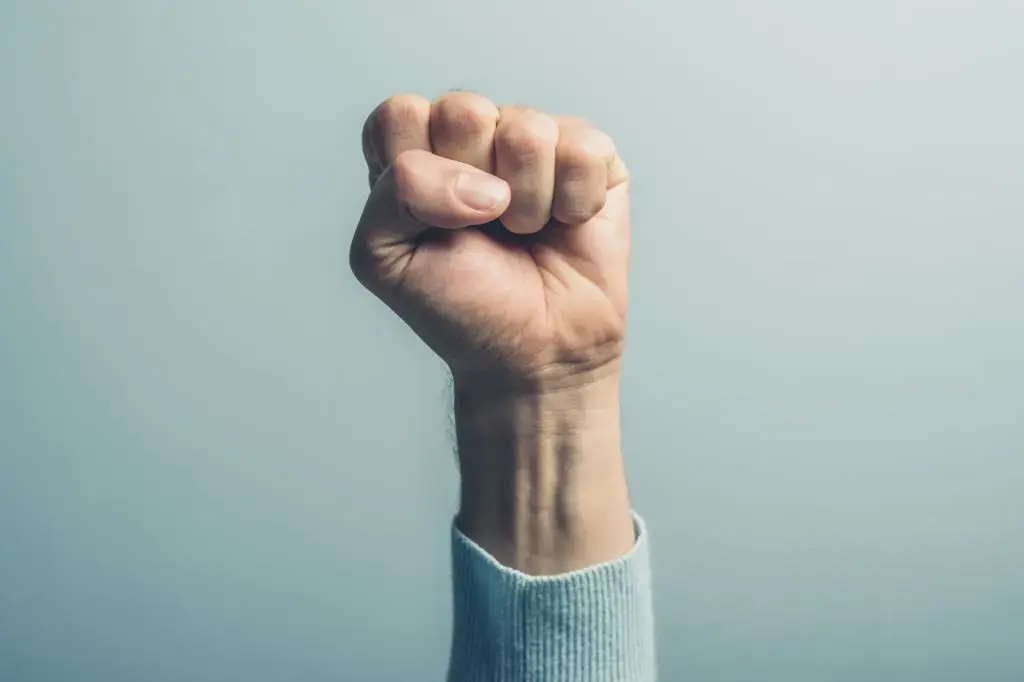
Finger bends:
- Hold your left hand straight as you begin, just like you did in the previous exercise.
- After holding it for a few seconds, straighten it.
- Reach down and bend your index finger toward your palm.
- After holding it for a few seconds, straighten it.
- One by one, repeat with the remaining fingers on your left hand.
- Put your right hand through the entire routine again.

Thumb bend:
- Before extending your left hand, ensure all the fingers are straight.
- Your thumb should be bent inward toward your palm.
- Using your thumb, reach toward the base of your pinky finger.
- If your pinky is out of reach, don’t worry.
- Just reach out as soon as your thumb allows.
- To move back to the starting position, hold your thumb for a little moment and then release it.
- Do this ten times.
- The exercise is done with your right hand.
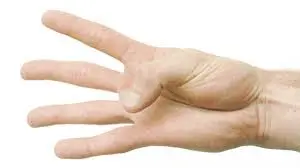
Make an ‘O’:
- First, extend your left hand, keeping the fingers straight.
- Bring all of your fingers together by bending them inward.
- Make an “O” with your fingers, please.
- Maintain this posture for a short while.
- After that, straighten your fingers once more.
- On the opposite hand, repeat.
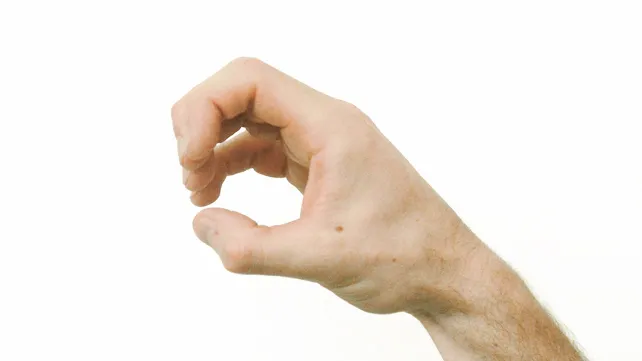
Table bend:
- Bend the remaining four fingers inward to create an “L” shape while keeping your thumb in the same spot.
- To go back to the starting position, straighten your fingers after holding it for a few seconds.
- Do this ten times.
- With your right hand, follow the identical procedures.
Finger lift:
- Lay the affected hand flat, palm down, on a table.
- Remove each finger from the table one at a time, beginning with the thumb.
- Hold each finger for a few seconds, then repeat the entire process with your right hand.
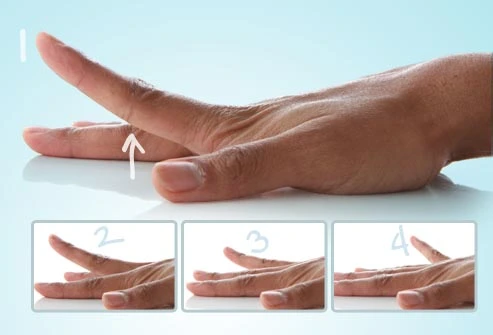
Wrist stretch:
- Squeeze your right hand lightly with your left hand to extend your arm and wrist.
- For a few seconds, maintain the position.
- Do this ten times.
- Next, finish the entire design with your left hand.

Roll back and forth:
- The ball should be placed on a level surface like a table.
- Using your right hand, move the ball from your palm to your fingertips to stretch each digit.
- Return the ball to its initial location by rolling it.
- Repeat this exercise with your left hand.
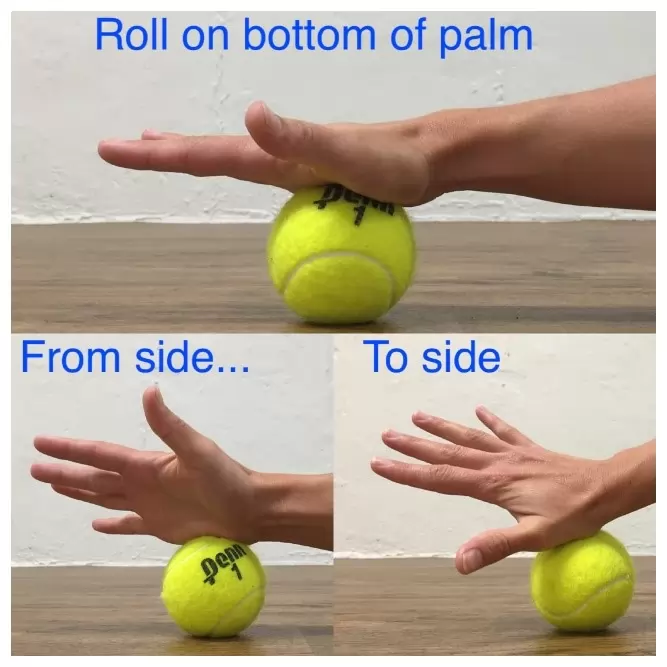
Full grip:
- Use a tennis ball, stress ball, or comparable softball for the following exercises.
- However, you might need to avoid this exercise and discuss your choices with a doctor if you have an injury to your thumb joint or an active flare in your hands.
- This exercise should only be performed a couple of times a week, separated by at least 48 hours of recovery.
- Let go of the ball.
- Do this exercise fifteen times.
- Next, use your left hand to complete the exercise.
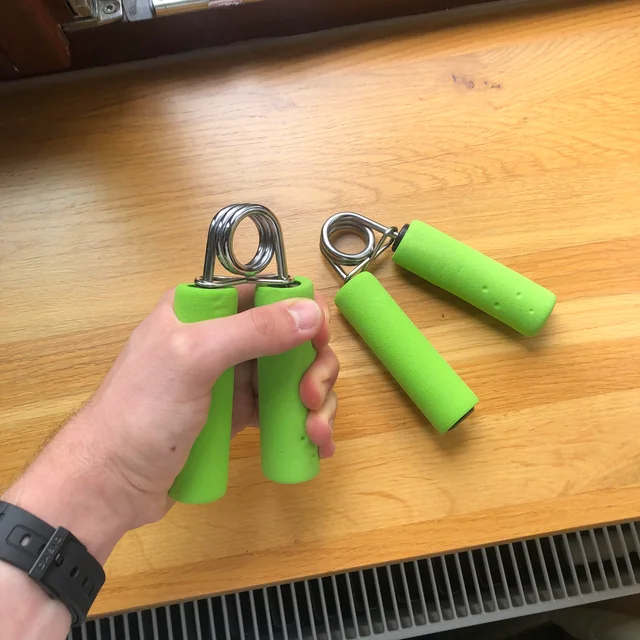
Thumb extension:
- Move your thumb away from the hand and bend.
- Put a flat right hand on the floor.
- Hold for five seconds.
- Do this ten to fifteen times.
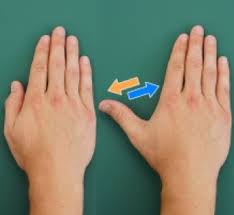
Finger stretch:
- Put a flat right hand on the floor.
- Apply light pressure on your finger joints with your left hand.
- You can stretch one finger at a time if your finger joints are sore.
- For 30 seconds, press.
- Next, use your left hand to complete the exercise.
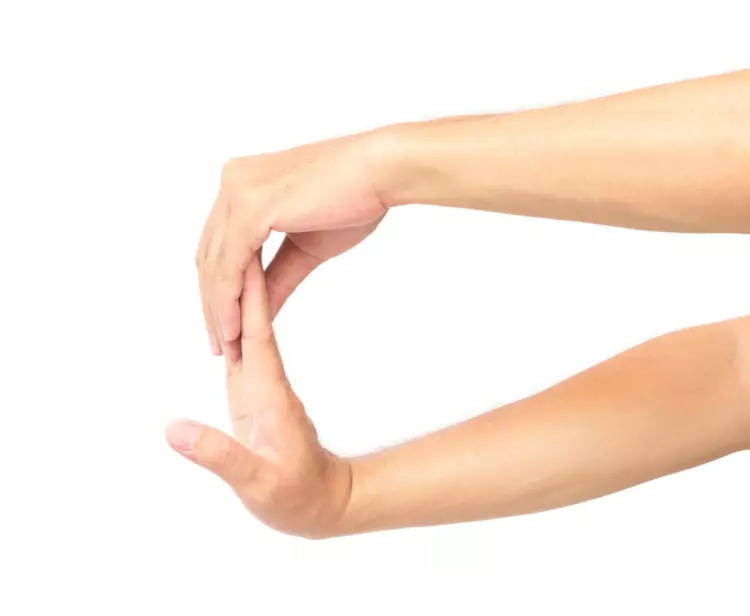
Physiotherapy treatment for osteoarthritis of the knee:
Standing leg lifts:
- Place yourself up against a wall.
- Keep the toes pointed forward or slightly in as you raise a leg to the side without turning them.
- Don’t slant toward the side that isn’t moving.
- Bring the leg down.
- On each side, repeat 15–20 times.

Sit and stand:
- Fold your arms over your chest.
- Slowly, stand up straight.
- Return to your seat slowly.
- Do this again for a minute.
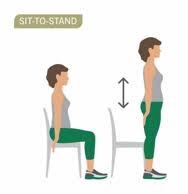
Kick-backs:
- Get to your feet.
- Drop the leg after holding it for a short while.
- The knees should be in line, and the posture should be straight.
- Ten to twenty-five repetitions per session.
- Do these exercises several times each day.
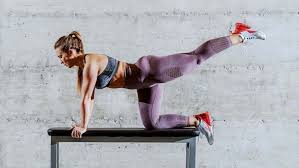
The clam:
- To one side, lie.
- Bend the hips and knees to a 90-degree angle and align the feet, hips, and shoulders.
- Don’t separate your feet.
- Repeat on the opposite side after holding the stretch for three to five seconds.
- Do this ten to twenty-five times a day, preferably twice.

Quadriceps stretch:
- Lay with your back to the floor.
- For support, the right forearm should be in front.
- Bend the left knee while holding the shin or ankle with the left hand.
- Repeat a few times on each side after swapping sides.
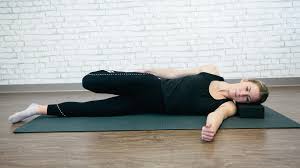
Hamstrings stretch:
- Laying on your back, extend your legs.
- Bend the right knee and use both hands to grasp the back of the thigh.
- The leg should be gradually pulled toward the chest.
- The leg should point straight up when the arms are relaxed.
- As much as you can, straighten this leg toward the sky, and then hold it there for ten to twenty seconds.
- Stretch the knee again after bending it again.
- Proceed to the other side.
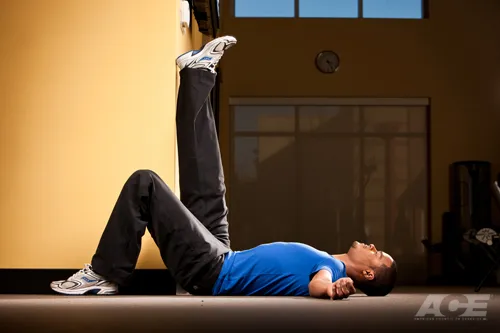
Elliptical training:
- According to the Arthritis Foundation, one should use a machine with a control panel that lets one change the strength and incline.
- For complete comfort and balance, it should also have two sets of handles—one stable and one moving.
Swimming:
- This is a low-impact, full-body cardiovascular workout.
- People of all ages can benefit from swimming as an activity, and many arthritis sufferers find it to be calming.
- Swimming is easy on all joints, especially the knees because the water supports 90% of the body weight.
- Many of the advantages of swimming can be obtained by performing slower, standing aerobic exercises in shallow water if swimming is too challenging.
Physiotherapy treatment for osteoarthritis of the hip:
Chair stand:
- Sit at the front of a chair that is against the wall with your feet flat on the floor.
- Place your hands on your shoulders and cross your arms as you sit.
- Bring your upper body forward and slowly stand up, keeping your head, neck, and back straight.
- Return to your initial seated position gradually.
- Build your strength gradually up to 12 repetitions by repeating this up to six times.
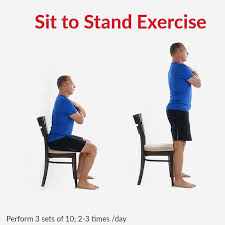
Bridge:
- On the floor, lie on your back.
- Place your palms close to your hips while keeping your knees bent and your feet flat on the ground.
- Using your hands for balance, raise your buttocks as high as you can while maintaining a straight back.
- After ten seconds of holding, return to the floor.
- Do this 8–12 times.
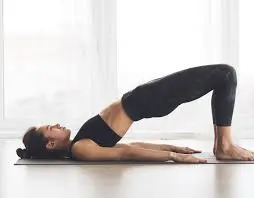
Hip extension:
- Lean forward a little and balance on the back of a chair.
- As you tighten your buttocks, raise your right leg straight behind you.
- Without arching your back or bending your knee, raise the leg as high as you can.
- Hold the position for a short while, then slowly drop the leg.
- Try to do this 8–12 times on each side, repeating with your left leg.

Inner leg stretch:
- The soles of your feet should contact while you sit with your knees bent.
- Bend your upper body forward a little while holding your shins or ankles.
- Use your elbows to gently press your knees down, then hold the position for 20 to 30 seconds.

Hip and lower back stretch:
- Stretch your legs out while lying on your back.
- Tuck your chin into your chest while keeping your neck on the floor.
- Grab behind the knees and pull toward the chest while bending your knees into your chest.
- Repeat 8–12 times after taking a deep breath and letting it out.
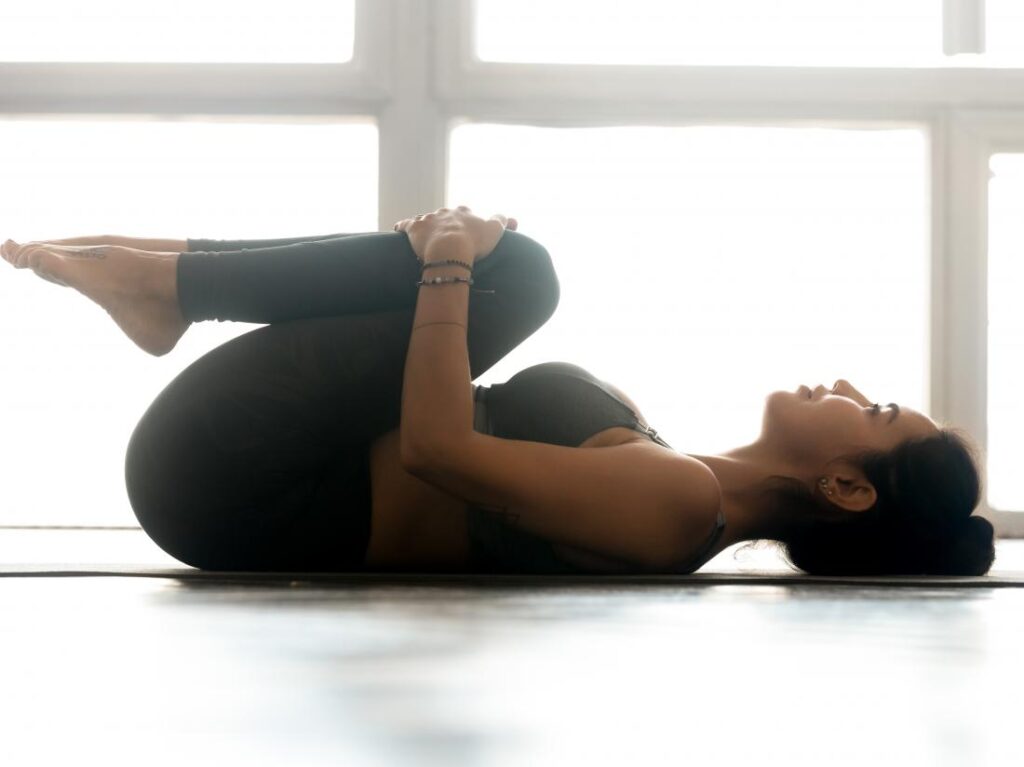
Double hip rotation:
- Lower your knees slowly to one side while moving your head to the other, keeping your shoulders on the floor and your arms extended.
- Repeat on the other side after bringing the knees back.
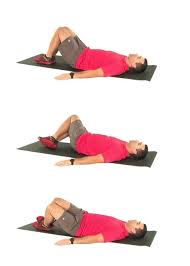
Balance exercises:
- You can feel more confident and reduce your risk of falling by doing balance exercises three days a week. Exercises that improve balance include, for example:
- standing on one foot, slowly walking backward, simple yoga poses
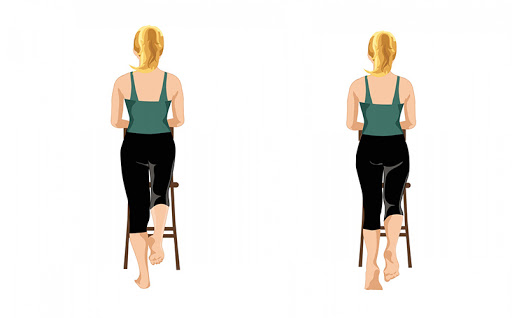
Physiotherapy treatment for osteoarthritis of the neck:
Neck drop and raise:
- This stretch improves your neck’s flexibility and range of motion by targeting the front and back.
- Either sit in a chair or stand up straight.
- Slowly lower your head forward until your chin touches your chest.
- Maintain this posture for five to ten seconds.
- Then go back to where you were before.
- After that, tilt your head back a little and stay there for five to ten seconds.
- Five times, repeat the stretch in each direction.
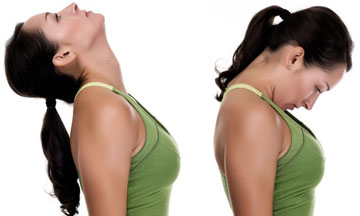
Head tilt:
- Either sit in a chair or stand up straight.
- Holding your left shoulder down, slowly tilt your head toward your right shoulder.
- Holding onto the bottom of your chair with your left hand might sometimes help to make the stretch more intense.
- Return your head to the center after holding this position for five to ten seconds.
- Hold your right shoulder down and lean your head toward your left shoulder to repeat on the left side.
- Maintain this posture for five to ten seconds.
- Do this entire process five times.
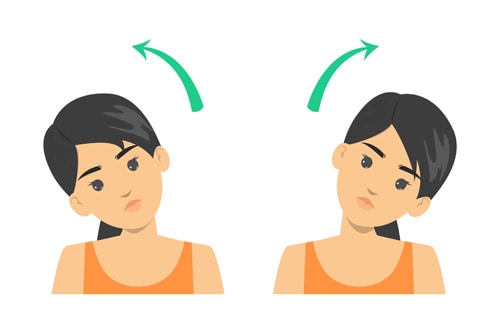
Neck rotation:
- Maintain proper posture while standing or sitting.
- Maintaining a straight chin, slowly turn your head to the right.
- Return to the center after holding this position for five to ten seconds.
- Turn your head slowly to the left, then keep it there for five to ten seconds.
- Then head back to the middle.
- On each side, repeat five times.
Neck retraction:
- With your head upright and your shoulders back, sit in a chair.
- Make a double chin by pulling your chin straight in.
- Feel the stretch in your neck as you hold this position for five to ten seconds.
- Go back to where you were before.
- Five times, repeat.

Shoulder rolls:
- Don’t ignore your shoulders as you concentrate on your neck.
- Your neck’s supporting muscles will get stronger if you work on your shoulders.
- A simple, straightforward exercise to maintain the fluidity of your neck and shoulder joints is the shoulder roll.
- Place your feet shoulder-width apart and either stand or sit in a chair.
- In a single fluid action, roll your shoulders up, back, and down.
- Five times, repeat this motion.
- After that, roll your shoulders up, forward, and down five times in reverse.

Physiotherapy treatment for arthritis of the lower back:
Side stretches:
- Raise your arms above your head while sitting or standing up straight.
- Turn the hands toward the ceiling and interlace the fingers.
- Feel a stretch along the left side of the body as you gently draw the interlaced hands to the right.
- Repeat on the opposite side after 30 seconds of holding.
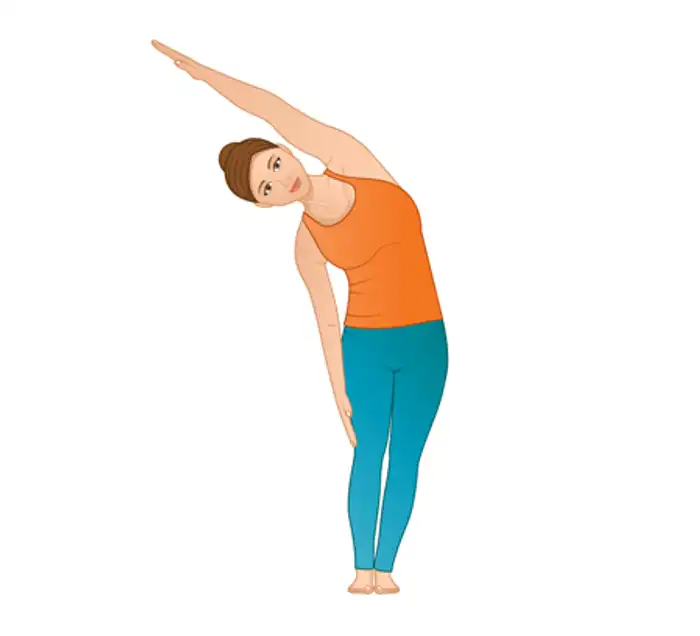
Trunk rotation:
- Cross your arms so that each hand rests on the shoulder on the other side, and stand or sit up straight on a chair.
- An alternative is for someone to hold something, like a ball.
- Gently twist the spine to the left while maintaining the buttocks in the same position.
- Repeat the twist on the right side after you’ve returned to the center.
- Ten times on each side, repeat the twist.
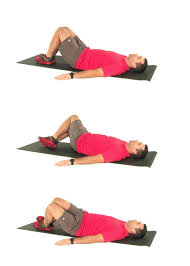
Cat-Cow Pose:
- Place your hands under your shoulders and your knees under your hips to begin on all fours.
- Tuck the chin into your chest and round your spine toward the ceiling as you exhale.
- Let the shoulders and head fall to the ground. Return to the neutral position after holding for a moment.
- Look up toward the ceiling and arch your spine as you inhale.
- Do this 10–20 times.
Pelvic tilt:
- To begin, place your feet flat on the floor and bend your knees while lying on your back.
- Press the lower back into the floor and tense the muscles in your tummy.
- Tilt your pelvis and hips upward as you exhale.
- After five breaths of holding, gradually return to the beginning position.
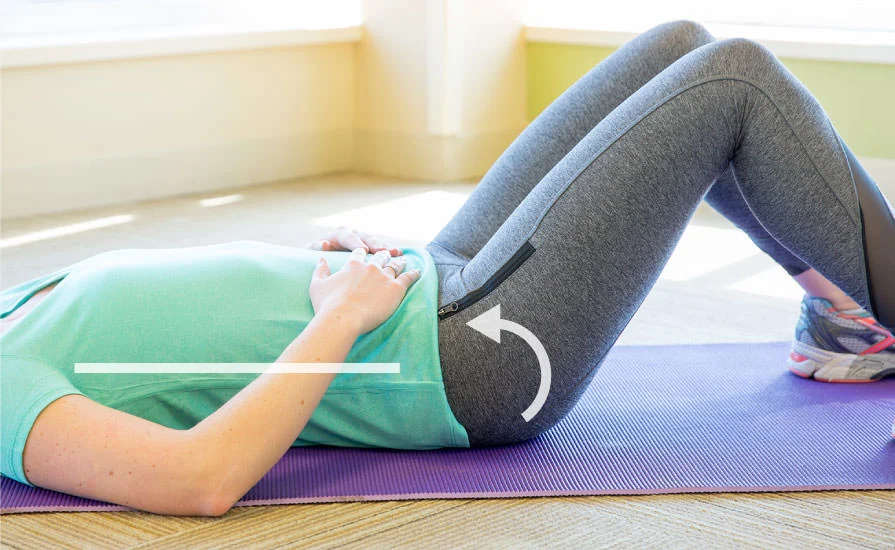
Knee rolls:
- To begin, place your feet flat on the floor and bend your knees while lying on your back.
- With the shoulders and upper back pressed into the floor, let both knees drop to one side.
- Repeat on the opposite side after 30 seconds of holding.
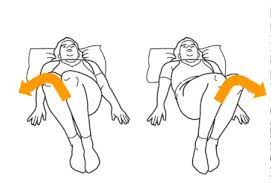
Bridge Pose:
- To begin, place your feet flat on the floor and bend your knees while lying on your back.
- Maintaining the shoulders and upper back pressed against the floor, press the feet into the ground and raise the hips toward the ceiling.
- After five breaths of holding, gradually return to the beginning position.

Prevention of osteoarthritis:
Osteoarthritis can be avoided by maintaining general health, which includes:
- Avoiding tobacco products.
- Doing low-impact exercise.
- Sticking to a healthy food plan.
- Always wear your seatbelt.
- Wearing the appropriate safety gear for every job, sport, or activity.
- Visiting a healthcare provider for regular checkups and as soon as you notice any changes in your joints.
Summary:
In conclusion, osteoarthritis is a chronic condition that can significantly impact joint function and quality of life.
- The most common type of arthritis, osteoarthritis, affects millions of individuals globally. It is a degenerative joint condition, which means that the smooth substance called cartilage—which cushions the ends of bones in joints—breaks away. The impacted joints may experience discomfort, stiffness, and loss of motion as a result of this breakdown.
- While it cannot be cured, early intervention, lifestyle modifications, and appropriate medical management can help alleviate symptoms, slow disease progression, and enhance overall mobility and well-being.
FAQ:
What is osteoarthritis’ primary cause?
overuse due to the joint’s repeated motions. joints with improper formation. history of osteoarthritis in the family.
Can someone with osteoarthritis lead a regular life?
You may live an active, healthy life with osteoarthritis if you have the proper support. There is no guarantee that the condition will worsen.
Which kind of exercise is beneficial for osteoarthritis?
People with osteoarthritis can benefit from aerobic activities such as walking, biking, swimming, tai chi, yoga, and water aerobics. Water’s buoyancy and calming warmth make it the perfect place for a workout. It serves as resistance to help increase muscle strength and is a mild method of exercising joints and muscles.
Can osteoarthritis be cured?
Even though osteoarthritis has no known cure, it doesn’t always get worse with time. Numerous therapies are available to assist alleviate the symptoms. Osteoarthritis symptoms are primarily treated with lifestyle changes including eating a nutritious diet and getting regular exercise.
Does walking help people with osteoarthritis?
Walking is very effective treatment for persons with arthritis, regardless of age. It eases discomfort by strengthening muscles, which relieve joint strain. Walking regularly also helps to circulate synovial fluid, which nourishes and gives oxygen to your joints, by compressing and releasing the cartilage in your knees.
End-stage osteoarthritis: what is it?
End-stage arthritis is characterized by the gradual deterioration of the cartilage between a joint’s bones, which causes the bones to rub painfully against one another when the joint is moved. This causes excruciating pain along with a loss of function and mobility.
References:
- Osteoarthritis. (2024, October 7). Cleveland Clinic. https://my.clevelandclinic.org/health/diseases/5599-osteoarthritis
- Branch, N. S. C. a. O. (2023, December 15). NIAMS health information on osteoarthritis. National Institute of Arthritis and Musculoskeletal and Skin Diseases. https://www.niams.nih.gov/health-topics/osteoarthritis
- Wikipedia contributors. (2024b, December 8). Osteoarthritis. Wikipedia. https://en.wikipedia.org/wiki/Osteoarthritis
- Whelan, C. (2024, April 11). Everything you need to know about osteoarthritis. Healthline. https://www.healthline.com/health/osteoarthritis
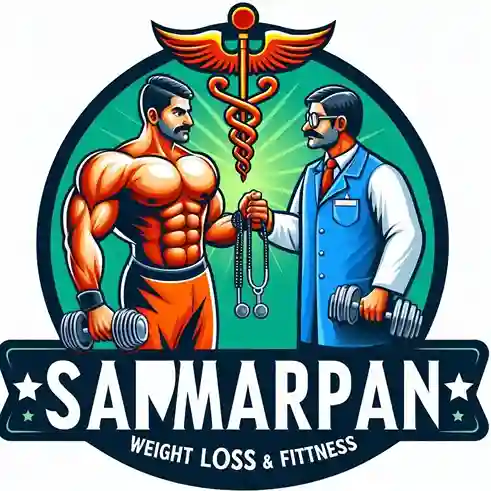
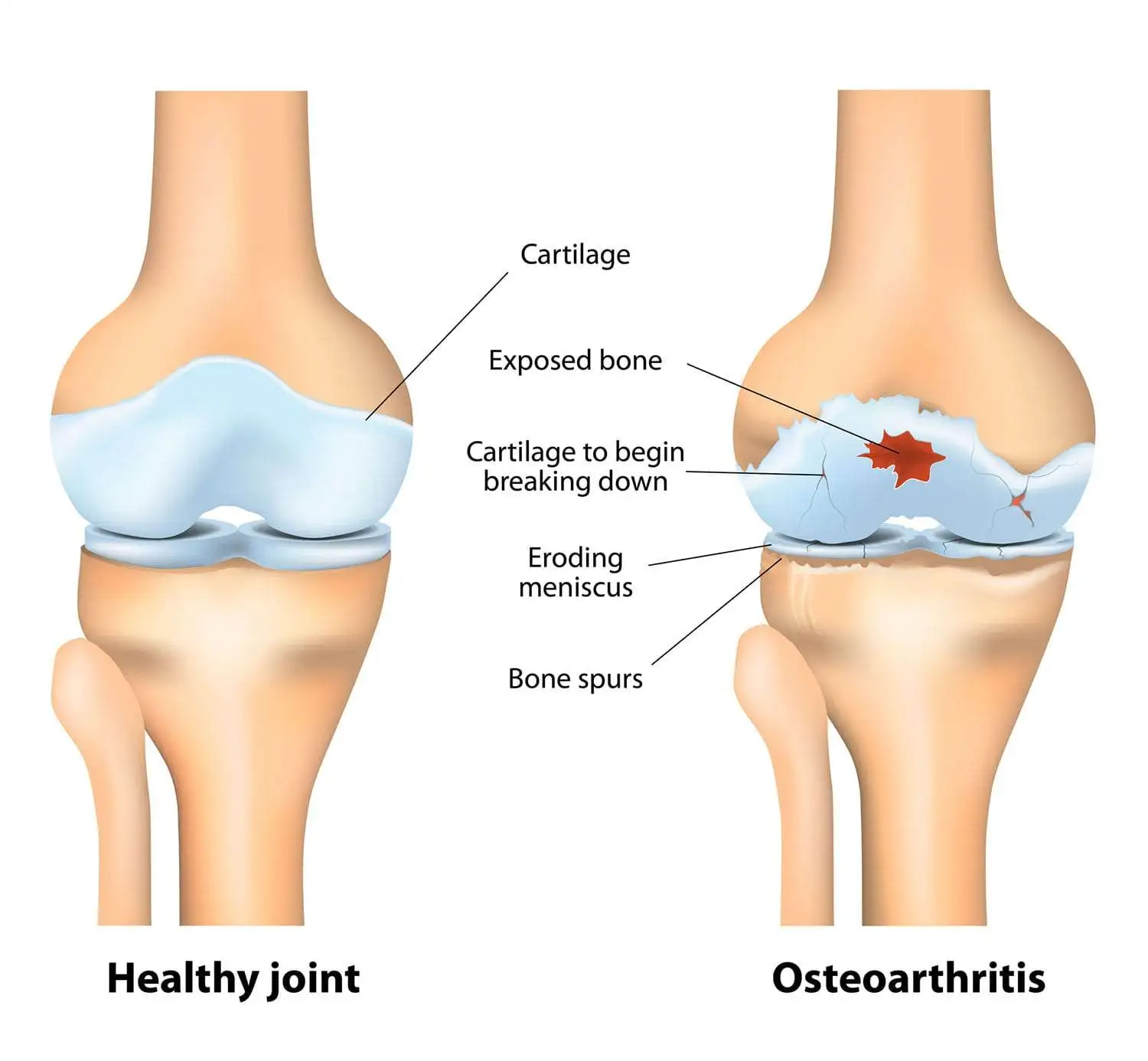
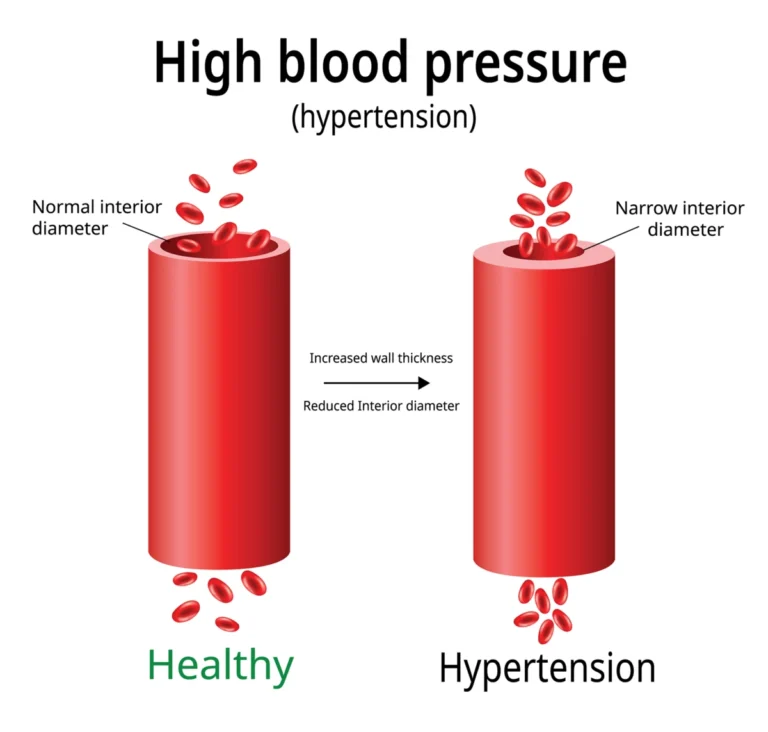
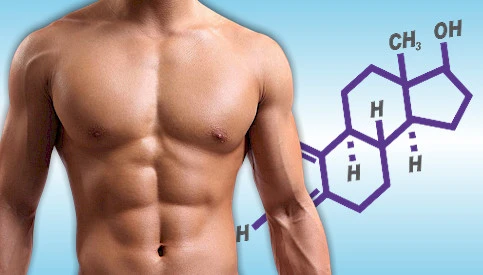

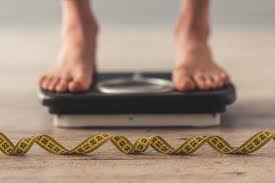

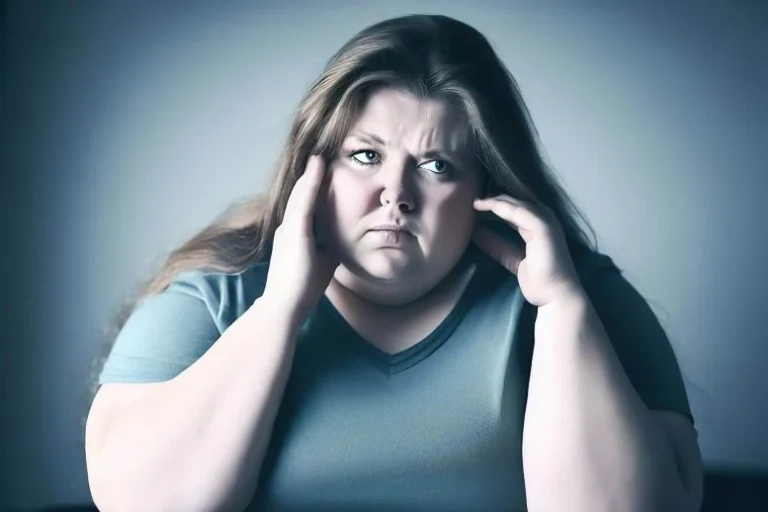
2 Comments